
When making the seemingly endless drive across the prairie of South Dakota an excuse to pull off the super-slab for a diversion is not only welcome, but a good idea for avoiding highway hypnosis.
 So on our way to see Mount Rushmore, and the amazing geologic formations of Badlands National Park, we were more than happy to make a quick pit stop at The World’s Only Corn Palace in the small city of Mitchell.
So on our way to see Mount Rushmore, and the amazing geologic formations of Badlands National Park, we were more than happy to make a quick pit stop at The World’s Only Corn Palace in the small city of Mitchell.
We have to say that we were surprised, to say the least, and impressed by the sight of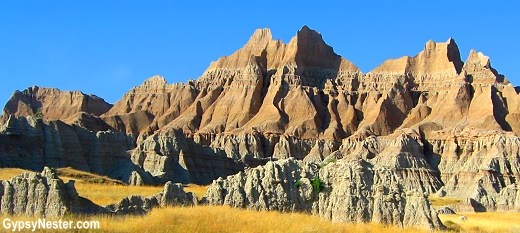 this improbable landmark in this farm town. The building looks like it may have been transplanted from Moscow or St. Petersburg.
this improbable landmark in this farm town. The building looks like it may have been transplanted from Moscow or St. Petersburg.

It is also not every day that we get to see the world’s only anything; it’s a pretty big claim to make, so we were duly excited at that prospect. We later learned that as far as corn palaces are concerned, this one couldn’t always make that declaration.
In the late eighteen hundreds, several towns across the Great Plains erected “crop palaces” or “grain palaces” as a way to promote their harvests. The big idea spread and found a home several places, including Gregory and Plankinton in South Dakota and Sioux City, Iowa.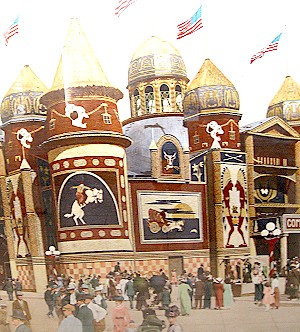
In 1892 Mitchell joined the craze, building a wooden structure on Main Street, all without the help of any of today’s best woodworking tools. Check out more at contractor culture.
This included a stage for entertainment and served as a gathering place for a fall festival. That tradition still continues with the annual Corn Palace Festival held in late August each year.
But the original hall was fairly short lived, and like the others might have become nothing more than a memory, except that the town council had other plans.
A big reason Mitchell’s maize mansion thrived long after the others disappeared was that the citizens were dedicated to civic advancement. In 1905, the townsfolk made a play to become the state capital, attempting to wrestle the honor away from those uppity big city dwellers up in Pierre.
Their big idea? Build a new, bigger Corn Palace… that’ll show ’em!
Even though the political effort failed, the new palace was a big hit. Renovations continued over the decades, adding the Russian-style onion domes and Moorish minarets that we found so oddly out of place on our visit.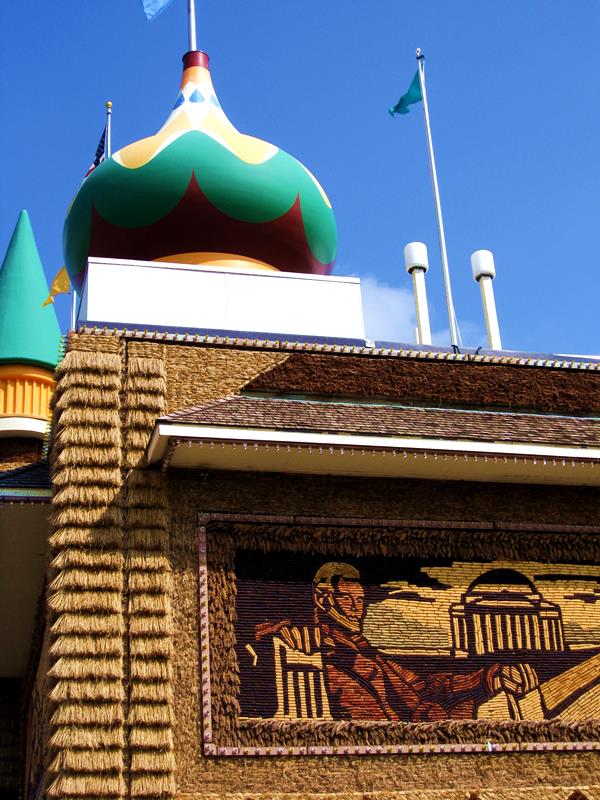
To make the whole scene even more surreal, the whole building is covered with stalks, shocks, husks, and ears, of corn, along with other grains and native grasses to create the self-proclaimed agricultural show-place of the world.
The walls serve as canvases for murals all depicting scenes from a new theme each season. Artistically placing kernels from thirteen different colored varieties of corn is an activity that the corn crazies on the palace council consider worthy of coughing up $130,000 each year to pull off.
They just might be right too, since over half a million curious consumers stop off in Mitchell every year to take a gander at the cornucopia castle.
When we went inside we found out that the Palace doesn’t just sit around doing nothing while wearing its corn coat. We discovered that this is home to more than just an annual harvest festival; this is also a basketball arena.
In fact, it has been hailed as one of the finest basketball venues in the upper Midwest and USA Today named the Corn Palace as one of the top 10 places in America for high school basketball.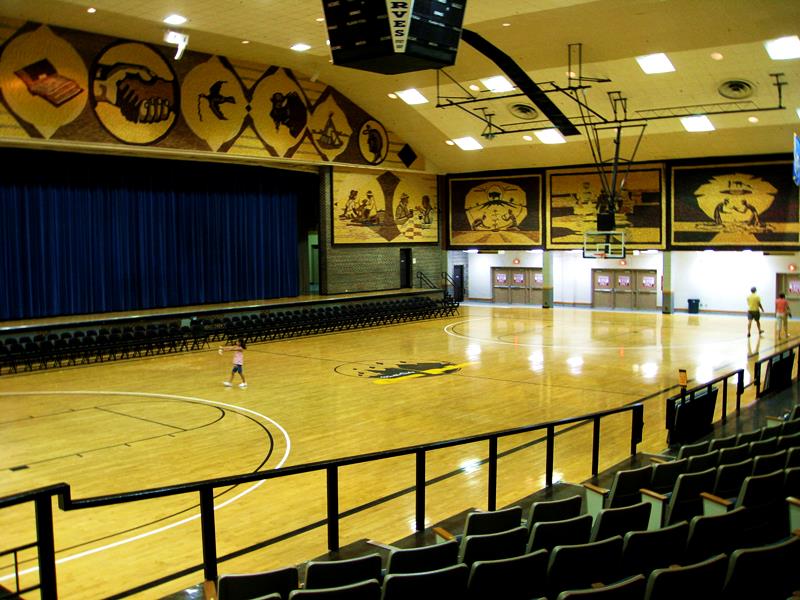
The praise is fitting, since one of the first events held in the current version of the corn coliseum was the 1921 South Dakota state high school basketball tournament.
The arena also serves as the home court of the Dakota Wesleyan University Tigers and the Mitchell High School Kernels teams.
We were sad to miss a game, and even more so the Corn Palace Festival or the Corn Palace Stampede Rodeo, but most of all we were nearly distraught to find that we were not in time for the Corn Palace Polka Festival.
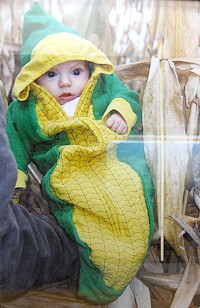
OK, Just kidding… sort of. Actually, that would be pretty sweet to see. After all, this is polka country. Lawrence Welk Played the Corn Palace at least five times over the years.
As we were leaving, it occurred to us that as surprised as we were to find this anachronism just off the interstate, we were equally intrigued by the lack of other corn celebrating venues in the region.
What’s up Nebraska? Aren’t you the Cornhuskers?
Then it struck us. Maybe another nickname for the Corn Palace – the World’s Largest Bird Feeder – has something to do with it.
Perhaps it was just too difficult to keep chasing off the barrage of squirrels and feathered friends looking to make a meal of the tasty structures, so we should be glad that one remains.
David & Veronica, GypsyNester.com
See all of our adventures in South Dakota!
This post contains sponsored links.



I liked reading this article about the World’s Only Corn Palace in South Dakota. It shows the amazing creativity and craftsmanship that goes into making this building out of corn and other crops every year. It also gives some background information on how this prairie palace started and evolved over time, as well as the theme and details of the current murals. I think this is a very interesting and informative article for anyone who wants to discover more about this unique attraction.
Nice place to add to my travel bucket, thanks for your suggestions keep doing the job.
So beautiful place and first time i am reading about it. thanks for sharing it.
I am from South Dakota, (Burke) but grew up about 100 miles east of Mitchell, in Iowa. Us Iowans always considered that we had better things to do than rebuild a Corn House every few months. We did have the World’s Greatest County Fair, however, in Spencer.